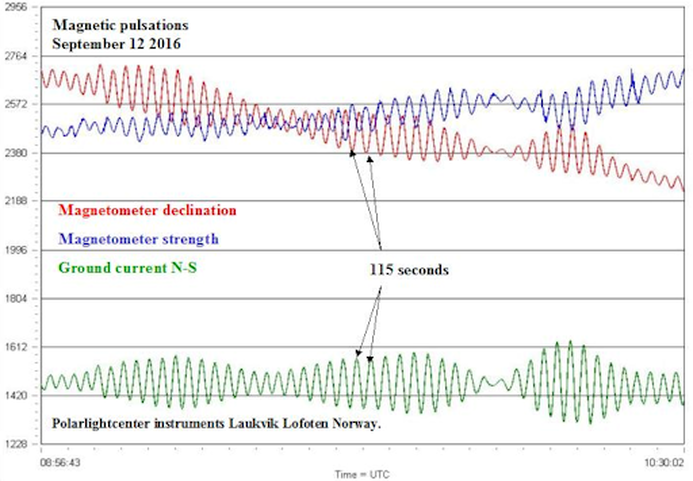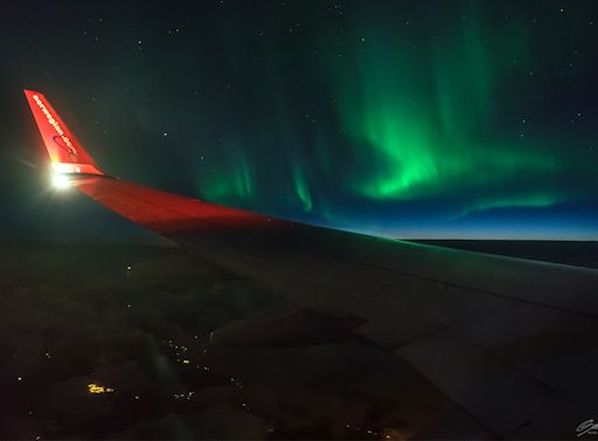These are natural ultra-low frequency oscillations known to researchers as "pulsations continuous" (Pc). The physics is familiar to anyone who has studied bells or resonant cavities. Earth's magnetic field carves out a cavity in the surrounding solar wind. Pressure fluctuations in the solar wind can excite wave modes in this cavity much like Stammes observed. References: #1, #2, #3.
The Sept. 12th oscillations are Pc4 waves; in other words, their frequencies fall in the range 6.7–22 mHz. Pc4 waves, and their even lower frequency cousins Pc5 waves (1.7–6.7 mHz), can have an energizing influence on particles in Earth's inner magnetosphere because the waves resonate with the natural motion of particles around the geomagnetic field. Perhaps it is no surprise, then, that bright auroras were observed on both Sept. 11th and 12th.
Ole Salomonsen photographed these from the window of an airplane just before sunrise in Norway:
Rob Stammes has been monitoring magnetic pulsations in Norway for years. "They seem to occur most often around the equinoxes," he says. That means we should stay tuned for more. It is aurora season, after all.
www.spaceweather.com


 RSS Feed
RSS Feed